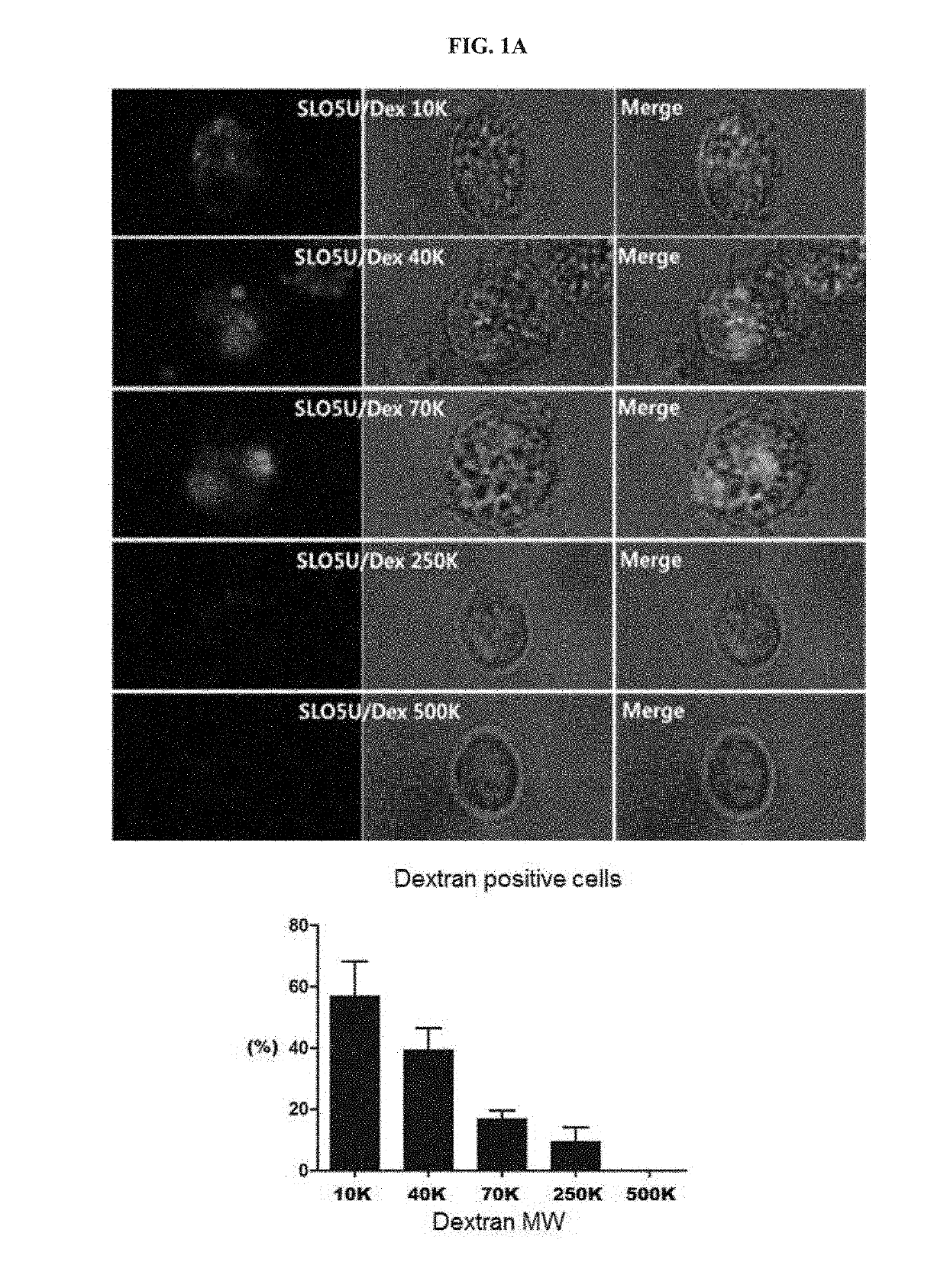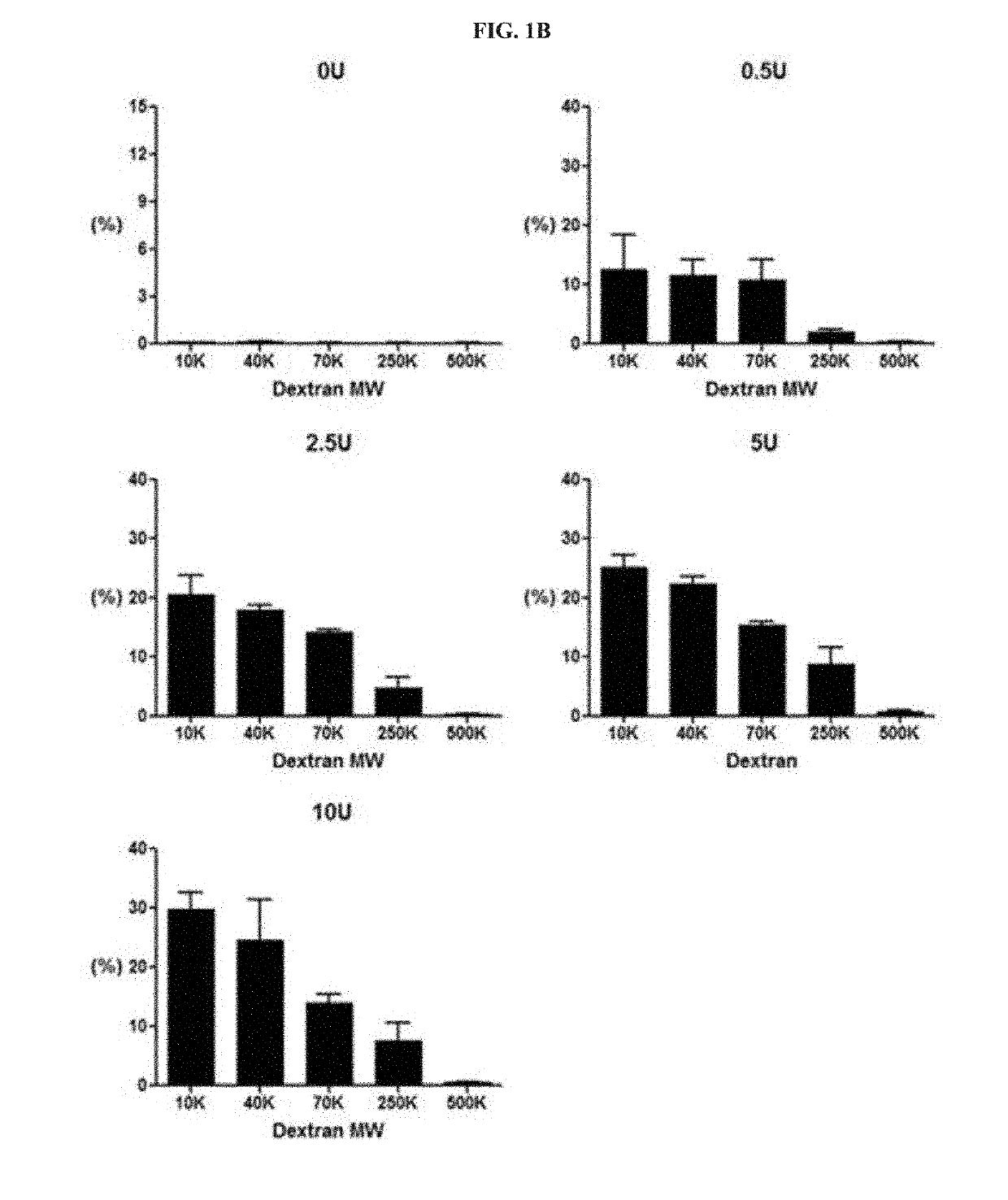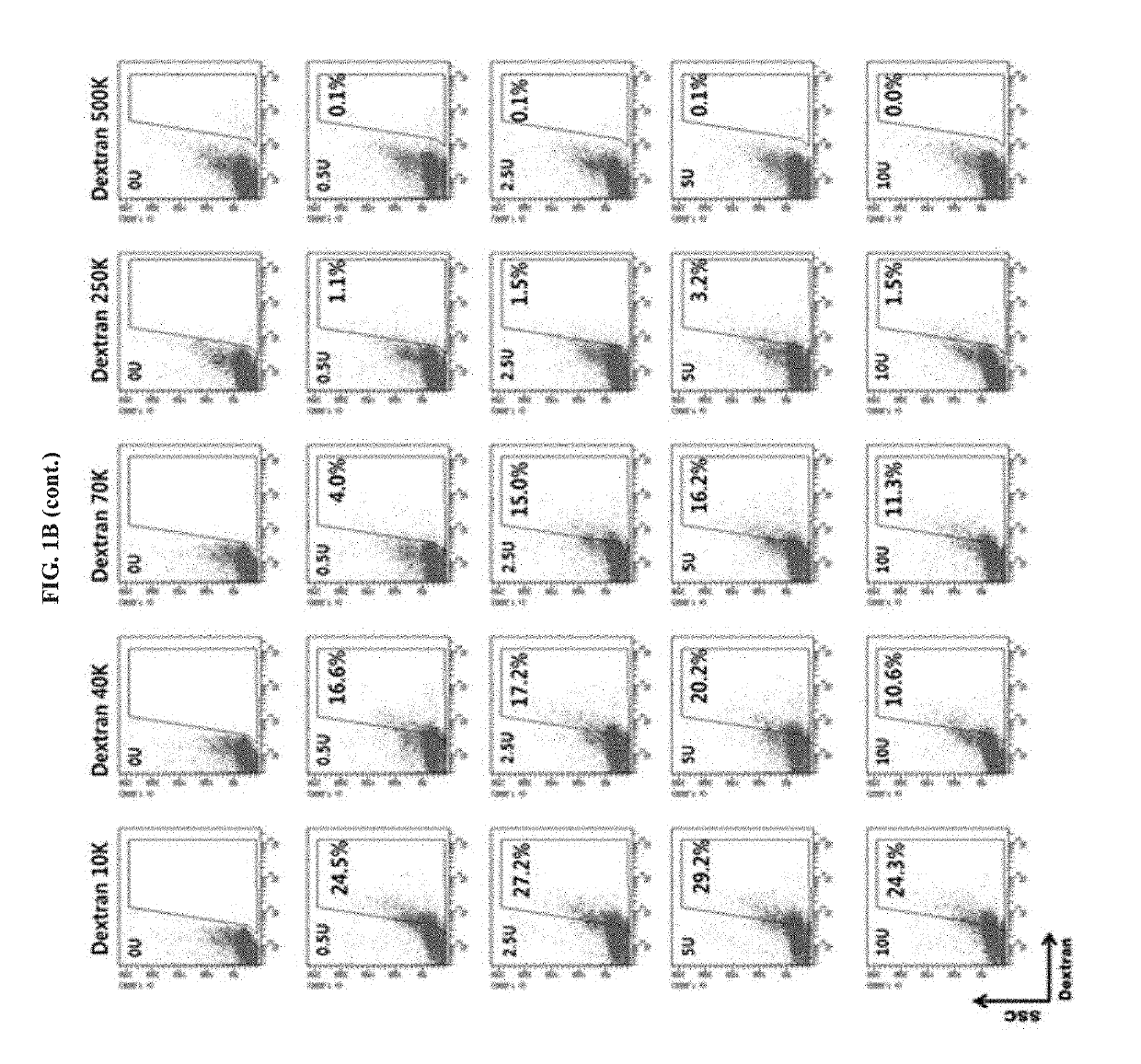Methods for isolating and culturing living cells using method of permeabilizing cell membrane
a cell membrane and cell technology, applied in cell dissociation methods, instruments, skeletal/connective tissue cells, etc., can solve the problems of high cost, decreased activity, and inability to culture isolated cells, and achieve fast, objective and quantitative record
- Summary
- Abstract
- Description
- Claims
- Application Information
AI Technical Summary
Benefits of technology
Problems solved by technology
Method used
Image
Examples
example 1
of PBMCs from Peripheral Blood
[0080]10 cc of blood of a normal group was well mixed in 20 mL of phosphate-buffered saline (PBS, Invitrogen, NY, USA), and 12 mL of Ficoll-Paque (GE Health Care, Piscataway, N.J.) was slowly added thereto from the bottom so as to separate layers. Following centrifugation at 2,500 rpm for 30 minutes, the serum was removed from the uppermost layer of the four layers, and only PBMCs present in the middle of the layers were isolated using a pipette and mixed in PBS. Afterward, the PBMCs were washed twice by centrifugation at 1,800 rpm for 10 minutes, suspended in PBS at 1×106 / 100 uL, and then dispensed into EP tubes.
example 2
. Permeability of Streptococcal Hemolytic Exotoxin (Streptolysin O; SLO)
[0081]An experiment for determining an exact concentration for making a pore in a cell membrane using a streptococcal hemolytic exotoxin (Streptolysin O; SLO; Sigma-Aldrich, MO, USA) was performed. In a permeabilization step, the isolated PBMCs or cell lines were centrifuged in cold PBS (Invitrogen, NY, USA) at 1,800 rpm for 5 minutes to collect the cells. 1×106 / 100 μL of the cells were suspended in PBS, and dispensed into EP tubes. Each cell line was treated with a suitable concentration of a streptococcal hemolytic exotoxin (Streptolysin O; SLO) in a 37□ water bath for 50 minutes and then incubated on ice for 1 minute, 1 mL of PBS was added to the sample, and then the cells collected by centrifugation at 4□ for 3 minutes at 1,800 rpm were resuspended in an ATP regeneration solution. The ATP regeneration solution was prepared by adding 1 mM ATP, 10 mM creatine phosphate, 25 μg / mL creatine kinase, 100 μM GTP (Si...
example 3
. Analysis of Permeabilization Efficiency Using Dextran-FITC
PUM
 Login to View More
Login to View More Abstract
Description
Claims
Application Information
 Login to View More
Login to View More - R&D
- Intellectual Property
- Life Sciences
- Materials
- Tech Scout
- Unparalleled Data Quality
- Higher Quality Content
- 60% Fewer Hallucinations
Browse by: Latest US Patents, China's latest patents, Technical Efficacy Thesaurus, Application Domain, Technology Topic, Popular Technical Reports.
© 2025 PatSnap. All rights reserved.Legal|Privacy policy|Modern Slavery Act Transparency Statement|Sitemap|About US| Contact US: help@patsnap.com



